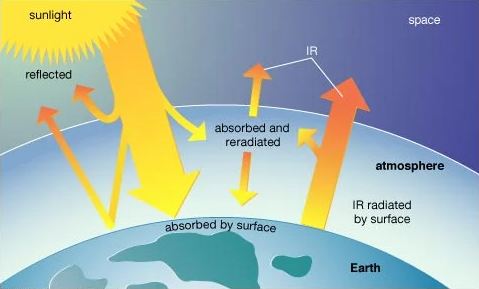What is solar energy | common uses of solar energy | How Does Solar Work
solar energy, radiation from
the Sun capable of producing heat, causing chemical
reactions, or generating electricity. The total amount of solar energy
incident on Earth is vastly in excess of the world’s current and anticipated
energy requirements. If suitably harnessed, this highly diffused source has the
potential to satisfy all future energy needs. In the 21st century solar energy
is expected to become increasingly attractive as a renewable energy source
because of its inexhaustible supply and its nonpolluting character, in stark
contrast to the finite fossil fuels coal, petroleum, and natural
gas.
The Sun is an extremely powerful
energy source, and sunlight is by far the largest source of energy
received by Earth, but its intensity at Earth’s surface is actually
quite low. This is essentially because of the enormous radial spreading of
radiation from the distant Sun. A relatively minor additional loss is due to
Earth’s atmosphere and clouds, which absorb or scatter as much
as 54 percent of the incoming sunlight. The sunlight that reaches the
ground consists of nearly 50 percent visible light, 45 percent infrared
radiation, and smaller amounts of ultraviolet and other forms
of electromagnetic radiation.
 |
Reflection and absorption of solar energy. Although some incoming sunlight is reflected by Earth's atmosphere and surface, most is absorbed by the surface, which is warmed. |
Reflection and absorption of solar energy. Although some incoming sunlight is reflected by Earth's atmosphere and surface, most is absorbed by the surface, which is warmed.
The potential for solar energy is enormous, since about 200,000 times the world’s total daily electric-generating capacity is received by Earth every day in the form of solar energy. Unfortunately, though solar energy itself is free, the high cost of its collection, conversion, and storage still limits its exploitation in many places. Solar radiation can be converted either into thermal energy (heat) or into electrical energy, though the former is easier to accomplish.
What are the common uses of solar energy?
Solar energy is commonly used for solar water heaters and house heating. The heat from solar ponds enables the production of chemicals, food, textiles, warm greenhouses, swimming pools, and livestock buildings. Cooking and providing a power source for electronic devices can also be achieved by using solar energy.
How is solar energy collected?
The most common devices used to collect solar energy and convert it to thermal energy are flat-plate collectors. Another method of thermal energy conversion is found in solar ponds, which are bodies of salt water designed to collect and store solar energy. Solar radiation may also be converted directly into electricity by solar cells, or photovoltaic cells, or harnessed to cook food in specially designed solar ovens, which typically concentrate sunlight from over a wide area to a central point.
Post a Comment